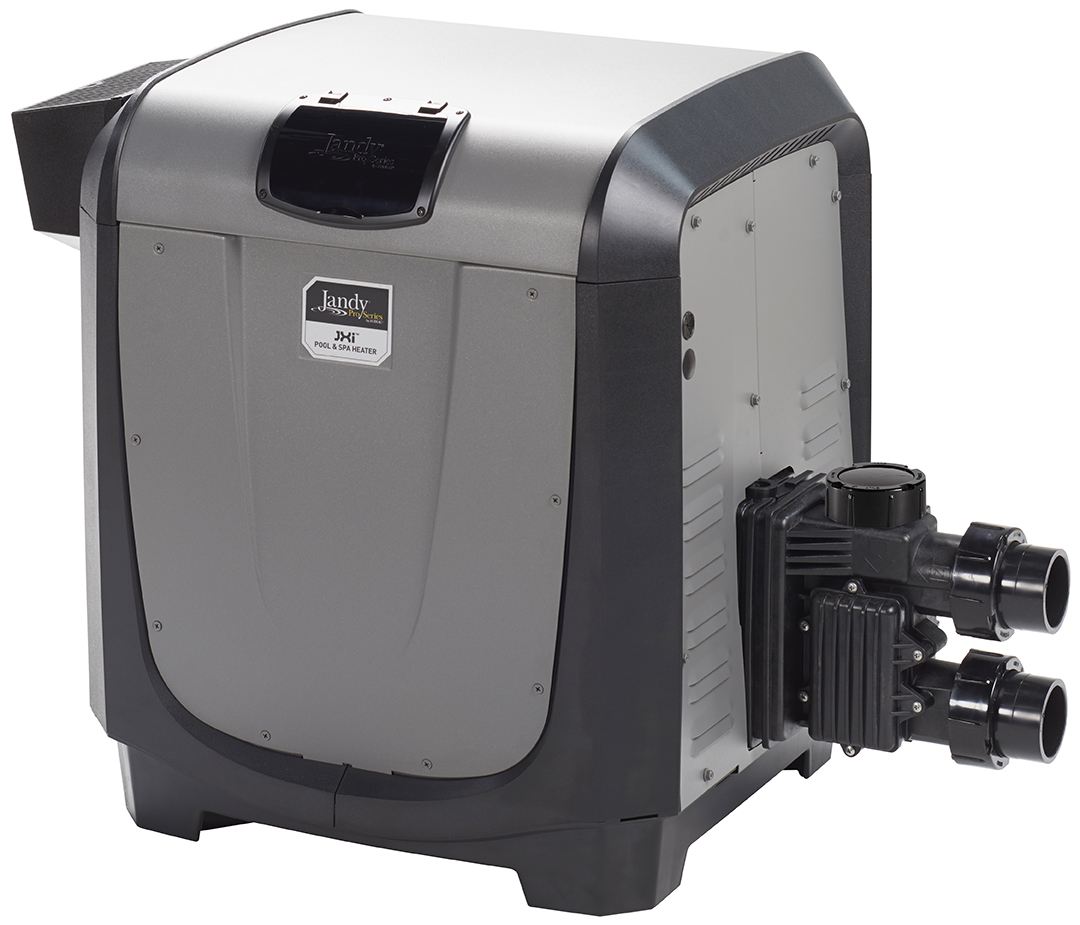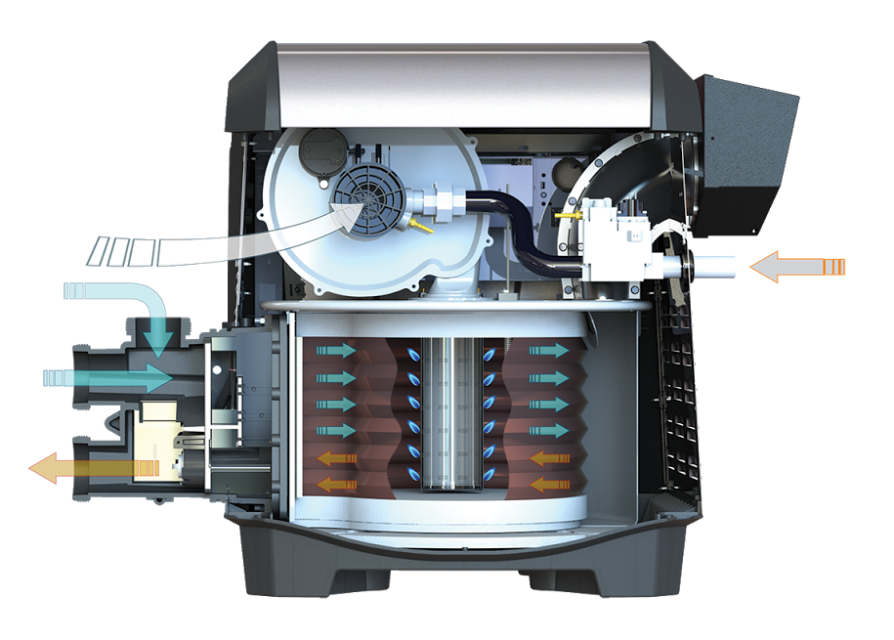Triple Threat

When Zodiac designs a product, Steve Gutai, director of technical sales and marketing at Zodiac Pool Systems, says it does so with three markets in mind: consumer, pool builder and service technician. The company’s new closed-combustion chamber heater, the Jandy JXi, which the company released this spring, benefits all three groups equally, Gutai says.
“The JXI gas heater has been a very successful launch for Zodiac Pool Systems,” Gutai says.

Builders
The No. 1 thing a builder wants is a heater with a small footprint, Gutai says, which allows them to work within the tight property lines and setbacks driven by building codes. The JXi, which works with Zodiac’s Versa Plumb kit, fits on a two-foot-by-two-foot pad, considerably smaller than most heaters on the market. Taking up a small area gains pool builders the flexibility they’re looking for, Gutai says.
“Versa Plumb is a plumbing configuration that gives the pool builder a straight line shot of the outlet filter to the heater,” Gutai says, “which reduces plumbing on the pad further making the pad smaller.” He adds that using Versa Plumb to tie in all equipment ensures a hydraulically balanced and efficient pool.
Service Technicians
David Hawes, owner of H & H Pool Service, started his company 45 years ago. Today, H & H services about 600 pools in the east San Francisco Bay area. Hawes’ company installed its first JXi heater last August and all retrofits. “In terms of installation, we’re pretty up on it,” Hawes says, adding that the JXi’s small size and flexible plumbing serve him well in the field.
“A lot of the service guys are not necessarily attracted to the bells and whistles,” Hawes says. “That’s what we use marketing the product. Since the heaters it replaces are typically bigger than the JXi, there’s more room to work with,” he says, and it’s also lighter than a typical heater.
The heater sits low to the ground, which could make for an uncomfortable situation when a service tech needs to work with the electrical compartment tray. But Zodiac designed the tray to flip up so it’s easy to reach.
“The options in terms of the [plumbing] manifold are really nice because they have two different ports that we can plumb to depending on how the equipment is set up,” Hawes says. “The configuration of equipment is across the board: Almost none of them are the same in terms of how it’s originally installed. The fact that we have options makes it attractive to us.”
When replacing an older heater, another helpful plumbing feature is that the lid can be rotated 180 degrees. “You never have to rotate around the manifold headers,” Gutai says. “It takes you 10 minutes to lift the lid up and rotate it around, instead of lifting and reversing headers.”
For Hawes, however, the most helpful JXi feature for a service company is the gas line. “The manufacturer has extended the gas line to the outside of the cabinet, which makes an easy connection to the existing gas line,” he says. “If we have to replace the gas line, we don’t have to worry about what size to put inside the cabinet to get to the outside of the cabinet.”
Hawes does have one suggestion about the JXi heater, however: He says removing the front panel requires taking off more screws than normal. Fortunately, that’s not something that needs to done often, and Zodiac engineers are continually working on ways to improve the heater based on dealer feedback. Hawes says it hasn’t stopped H&H from recommending or installing the heater.
“If we have a heater that requires an hour less installation than another model, we can have a favorable bid in there,” Hawes says. “It makes a difference.”
Consumers
No matter the product, consumers tend to have two questions (besides the initial price) — is it easy to use and is it expensive to run?
“The biggest feature the consumer has is the heater comes with the RS4U85 digital interface that connects it to the iAquaLink [automation] system,” Gutai says. That allows the consumer to control their heater, along with other components tied into iAquaLink, from their mobile phone, tablet or computer.
For customers who have other Jandy equipment or the iAquaLink already installed, Hawes says people appreciate they can troubleshoot with iAquaLink instead of going down and looking at their heater. “That’s a feature that people are looking for and enjoy,” he says.
Gutai says the JXi is 83 percent efficient, meaning 83 percent of the fuel that goes into the heater, whether natural or propane gas, is converted to heat in the form BTUs. This exceeds the U.S. Department of Energy’s requirement that gas-fired pool heaters manufactured on or after April 16, 2013 have a thermal efficiency not less than 82 percent.
“The efficiency rating on the heater is of course attractive to most of the clients we’re doing retrofits for,” Hawes says, “because the efficiency rating of the heaters we’re replacing are terrible.”
The JXi has only been out for a short time, but Hawes says all of his customers have been happy with it. “Time will tell in terms of its longevity and any extended issues,” Hawes says. “We’ve had zero issues with it so far. The homeowners are happy, and that’s what we’re all about. For service guys, that’s all they want — to put in a good product that’s going to last.”





